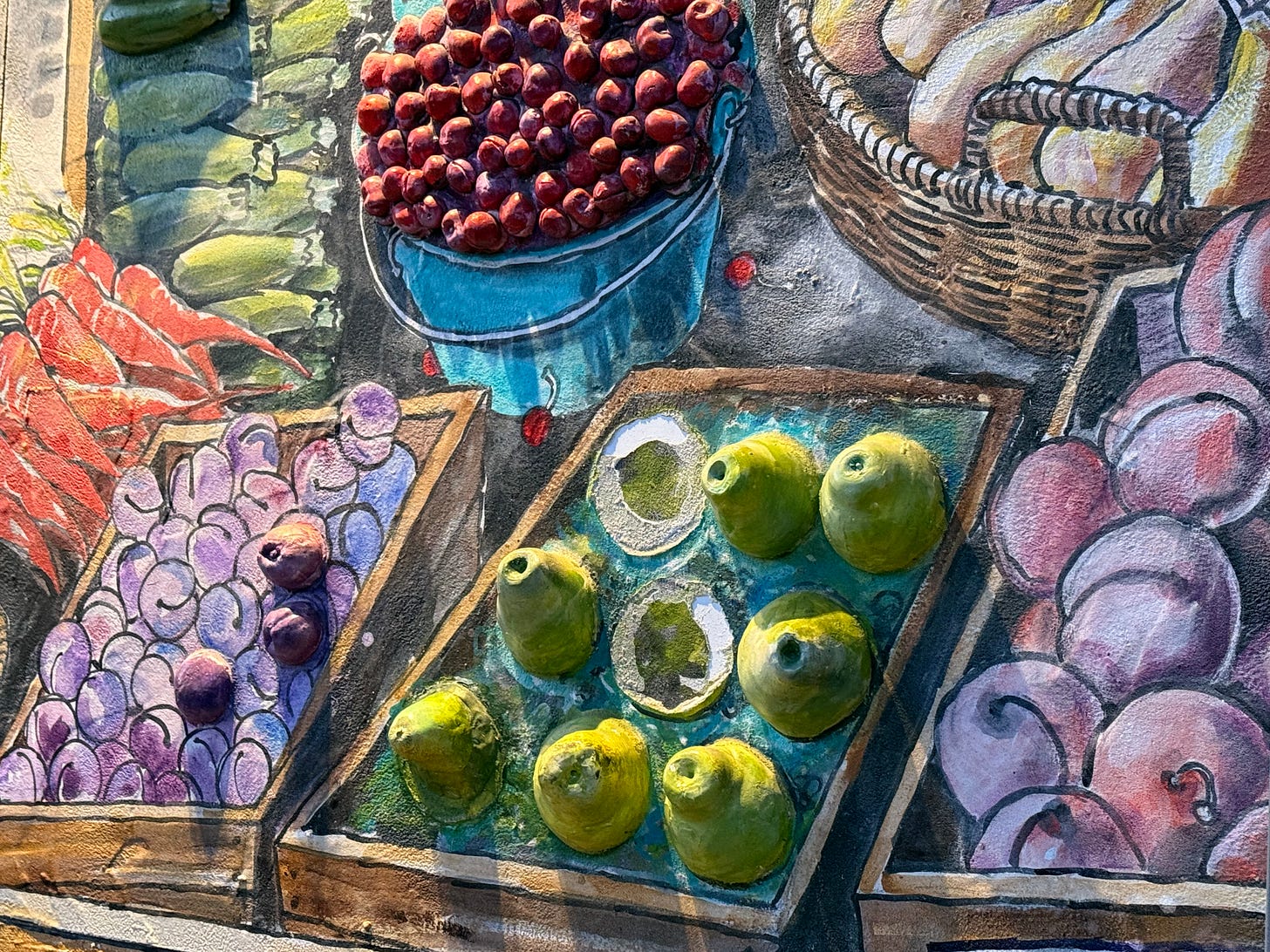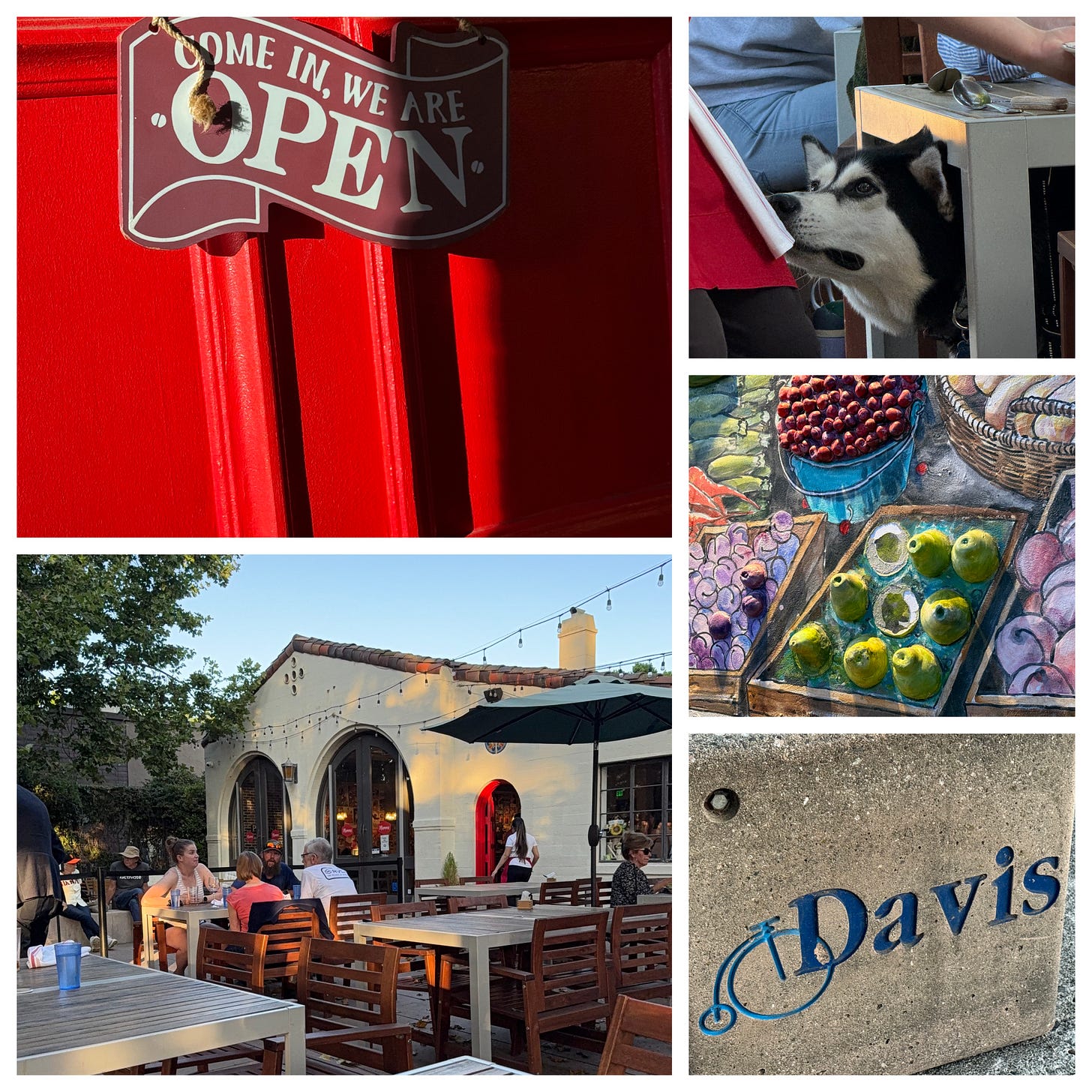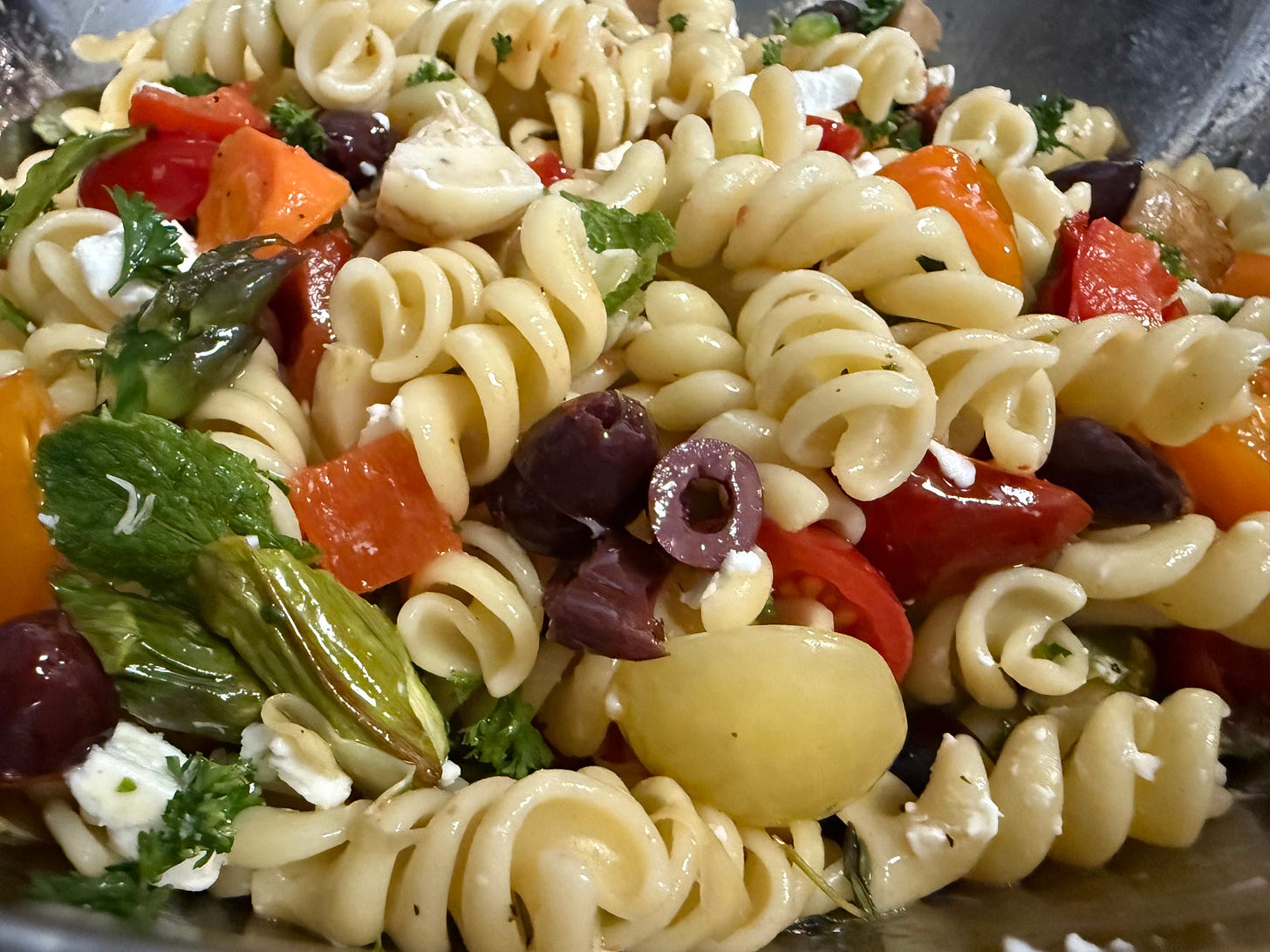A generous thank you to our paid subscribers - our TASTE Buds!
Welcome, new subscribers! If you enjoy this newsletter, please click on the
icon to like this post. This tiny gesture helps others to find their way here; please click to spread the word.
250th Year Fourth of July Thoughts
and I returned from a family event in California recently, and stayed overnight in Davis, home of the University of California-Davis (UC-D). It’s a renowned agricultural and viticultural school.When we talk about taking moments to appreciate seed developers, orchardists, university extension services and family farms, this is where the foundation of America’s world-class food system originates. These are the tacticians whose extraordinary work sets the basis for our national food culture.
Agriculture
The U.S. Department of Agriculture (USDA) supports UC-D researchers in developing new strains of rice and wheat with increased nutritional value and that are able to withstand drought and poor growing conditions.
UC-D develops indoor, controlled-environment farming techniques to improve plant productivity and minimize exposure to pathogens.
UC-D created a “glycopedia” of nutritional fibers to enable the development of individually tailored supplements to reduce inflammation and lessen our reliance on antibiotics.
UC-D provides training and support to small farms to assist in meeting food safety standards.
Viticulture & Oenology In California
UC Davis’s viticulture and enology program is widely regarded as one of the most prestigious in the world.
UC-D’s post undergraduate programs in natural science, plant science, microbiology and food science establish the foundation for secondary education in the vineyard and the lab.
UC-D offers a fully online Viticulture Certificate Program. It’s designed for vineyard managers, wine professionals, and aspiring growers.
Viticulture & Oenology In Oregon
Oregon State University’s (OSU) Viticulture and Enology program emphasizes sustainable wine grape production, balancing vine health with vineyard profitability.
OSU and the Oregon Wine Research Institute (OWRI) bring together experts in plant pathology, entomology, and agricultural economics to address issues like wildfire smoke taint and grapevine red blotch disease. Their work directly supports growers with practical, science-based solutions.
OSU researchers are pioneering RNAi-based sprays to combat grapevine red blotch virus—an approach akin to plant immunotherapy. This could revolutionize how vineyards manage disease without relying on vine removal.
Finding Ourselves In Davis
A 4-minute walk from our hotel room in downtown Davis, we sat on a broad, shaded patio, sipping and conversing, age- and ethnic-diverse groups of 2 to 12 people enjoying the evening.
Students forming lifelong relationships; Seniors on a first date; professors chatting. Every nationality.
This diversity, these skills, this imagination and dedication to excellence is what benefits every one of us as citizens of this great country.
This is who we are and have always been. This is our national 250th birthday year celebration. Let’s appreciate everyone who contributes to our collective well-being.
The Simple Art of Flavor Creation
The beauty of learning how to create and build flavor in food is its universality.
The method professional chefs use on the savory side and in dessert prep is the same: layering.
Reflect on what The Flavor Bible asks us to consider. What’s the occasion, the available preparation time, the ingredient budget, the time of year?
Another consideration is always the visual… how will I create beauty in this dish? A major part of the enjoyment of eating is the beauty you create. Look critically at the assemblance of color in the dish.
Think of the upcoming 250th Fourth of July celebration as an opportunity to pull out all the stops. Inject beauty!
A dish as simple as Roasted Vegetable Pasta Salad is an easy example:
Pasta is the foundation, a bland layer you might liken to a fresh canvas;
Artichoke hearts: meaty, nutty, buttery;
Kalamata olives: fruity, tangy with a pleasant brine;
Red bell pepper: broiled and charred with an earthy sweetness;
Carrots: roasted to activate their natural honeyed earthiness;
Asparagus: roasted to a caramelized sweetness of its own;
Serrano pepper (or jalapeno, if you choose): little pockets of bright heat;
Fresh parsley: cool, fresh, slightly peppery finish; and
Fresh mint: cool, clean, with menthol lingering on the tongue
Note that the artichokes and olives contribute bits of acid and tang. Note also that we’ve juxtaposed those qualities with the enhanced sweetness of red bell pepper and carrots. Little pops of heat in the hot pepper of your choice are offset with vibrant parsley and lively mint.
An added element is a flavorful vinaigrette - easily editable - tossed with the warm pasta which sets the foundation. If you have a favorite - lime, lemon, other citrus, balsamic based, use it in the same quantity!








